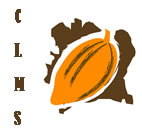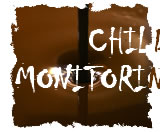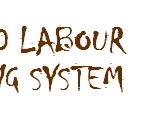|
|
|
| |
Pilot project |
|
The monitoring system concept is based on a pyramidal model of certification including four levels growing from the base to top: |
| |
 |
The first level is related to the setting of social programs of prevention as well as other capacity building programs. |
| |
 |
The second level is related to the implementation of the child labor monitoring |
| |
 |
The third level is related to the independent verification |
| |
 |
The last level is related to the issuance of the certification. |
|
| |
|
The basic work and the implementation of the CLMS project require some planning according to four key parts equivalent to immediate objectives (operational). |
| |
 |
Help the pilot project to be operational : It is a question of putting in place an operational structure of the project (hire and train the staff, acquire the equipment) and look at the setting up of an administrative structure of the project (district, sub-district, village level) |
| |
 |
Have a better and constant knowledge of the situation of child labour in the pilot zone : It is a question of setting up a database in order to provide the information through periodical surveys based on questionnaires. |
| |
 |
Arouse and sustain the consciousness of social and institutional partners regarding the control of child labour ; It is a question of planning and perform the actions of organizing of sensitizing and training in order to obtain from all key stakeholders the appropriate reaction, in terms of abusive child labor, i.e., commit themselves in: |
| |
|
| |
 |
Dealing possible cases efficiently and durably |
| |
 |
Preventing new cases efficiently and durably |
| |
 |
Giving all the information regarding the child labour situation in a transparent and objective way |
|
| |
 |
Promote an appropriate treatment to the issue of child labour in the cocoa sector. It is question of giving an identity to the combat against the worst forms of child labour in the cocoa sector, and to demonstrate the consciousness towards the issue of child labour in the cocoa sector. This will be done through the design and the implementation of a communication strategy to go along with the implementation of the project within the framework of the coca certification. |
|
|
|
In the national level, the combat against child labour is under the responsibility of a National Committee to combat child labour, which is above the national steering committee on child labour monitoring system.
|
|
|
|
| The CLMS implementation lies on an administrative structure, composed of sub- committees of the national committee, and an operational structure in charge of the CLMS operations on the grounds. |
| |
| |
| |
| |
| |
Village support unit
|
|
Two (2) pluri-disciplinary teams of three persons with appropriate background, trained in the participative methods, are in charge of sensitization operations. Competencies required include sociology, agriculture and economy. This type of team plans also a gender member. This intervention scheme, aimed at performing durable community results, has already made some proofs in several key projects dealing with rural development issues, with an experience shared in neighboring countries in the sub-region.
|
| |
Operating mode of teams
|
PHASE 1 : Describe the curent situation
|
| |
 |
Set up a participative diagnostic directed to the child labour issue in the cocoa farms, in order to have the whole understanding of the issue, create a mutual trust, pre-identify the cases and set the foundations for an action plan, etc.
|
| |
 |
Capture the information on the situation of reference (before any implementation of the action plan) in making a census of children in situation of child labour, as well as their employers.
|
|
| |
PHASE 2 : Act in response to the curent situation
|
|
The objective here is to design a participative action plan in order to prevent, retrieve and gather the information on child labour.
|
| |
PHASE 3 : Gather the information on the implementation of the action plan
|
|
The objective here is to capture the information regarding the evolution of the situation, following the implementation of participative action plan (follow-up of precedent cases, identification of new possible cases) ; This phase is very important, in the framework of the evaluation of the implementation of the action plan (efficiency, durability and adjustment), etc.) |
Localisation |
A sampling study of the district of Oumé has helped select six (6) villages where the project will be implemented.These villages are : |
 |
| |
|
|






